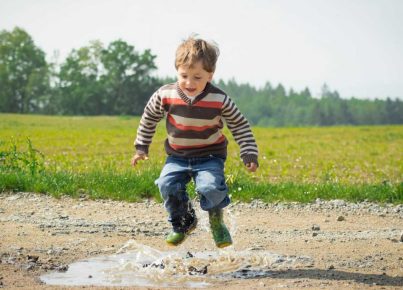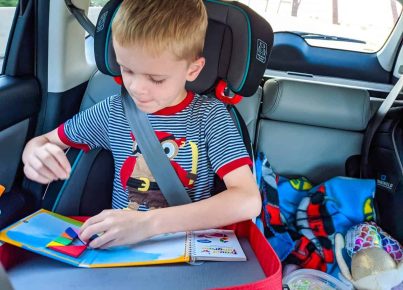Childhood Trauma: Handle With Care
Childhood trauma, marked by instances of extreme stress, abuse, neglect, or loss, leaves a profound impact on the developing mind of a child. These painful experiences can lead to PTSD childhood trauma, a condition where a child continually relives the traumatic event, causing severe distress and interference with their daily lives. Like handling a delicate artifact, addressing childhood trauma requires care, compassion, and professional help, enabling healing and transformation.
What is Childhood Trauma?
Childhood trauma encompasses startling, upsetting, or dangerous incidents that occur in a child’s life before turning 18. The range of these incidents includes being a victim of or witnessing violence, neglect, or abuse and surviving natural catastrophes or severe illnesses.
The psychological impact of such trauma is highly individualistic and can differ greatly from person to person. Some children may experience traumatic events and recover, while others may be profoundly impacted, grappling with overpowering emotions that lead to considerable distress and dysfunction. If left unattended, this trauma can linger into adulthood, underscoring the importance of recognizing and addressing childhood trauma.
Types of Childhood Trauma
So childhood trauma healing starts with recognizing the various traumatic experiences a child might encounter. Such comprehension is a potent instrument for understanding, empathizing with, and addressing the psychological impacts of trauma.
- Physical abuse includes actions that cause physical harm to the child, like striking, battering, or other violent behaviors.
- Emotional abuse encompasses continuous criticism, disparagement, or emotional assaults directed at the child.
- Sexual abuse incorporates any sexual act or behavior involving the child.
- Neglect is characterized by failing to fulfill the child’s necessities, including food, clothing, and care.
- Medical trauma refers to severe pain or intrusive medical procedures that can traumatize the child.
- Natural disasters such as floods, earthquakes, or fires, when experienced by the child, can result in trauma.
Recognizing these diverse forms of childhood trauma is essential in the healing process. Furthermore, it streamlines the process of determining the most appropriate treatment approaches.
Examples of Childhood Trauma
Childhood trauma can manifest in numerous ways, and its impacts are intricate and manifold. It could involve experiences such as being tormented at school, observing domestic violence, being part of a serious vehicular accident, or experiencing the loss of a loved one. Trauma could mean witnessing horrifying scenes of devastation and brutality for a child residing in conflict-ridden areas.
On the other hand, a child may endure trauma from residing with an abusive caretaker who consistently undermines them, making them feel insignificant and uncherished. It’s crucial to remember that what may be traumatic for one child may not hold for another; the interpretation of the event is highly personalized and individualistic.
Recognizing the Signs of Childhood Trauma
Detecting the signs of childhood trauma is essential in initiating the process of healing and recovery. The signs may vary greatly, depending on the child’s age and the trauma’s nature. They are typically categorized into behavioral, emotional, and physical signs.
Behavioral Signs
Children grappling with the impact of psychological trauma often display noticeable changes in behavior. They may become unusually aggressive or excessively anxious. Some children might start to withdraw from their friends or lose interest in activities they used to enjoy. School performance may suffer, and some children may struggle with attention and concentration. Frequent nightmares or difficulty sleeping can also be a significant indicator. Each child is unique, so these signs can differ.
Emotional Signs
The emotional signs of childhood trauma are just as crucial to observe. Children might show heightened fear, sadness, or anger. Feelings of detachment or a lack of emotional responsiveness can also be prominent. The child may exhibit excessive worry or fear about the safety of loved ones or show an intense fear of separation from those they’re close to. It’s crucial to remember that these signs indicate their struggle to cope with their traumatic experience.
Physical Signs
Childhood trauma can also manifest in physical symptoms. These may include unexplained aches and pains, changes in appetite leading to weight loss or gain, and somatic complaints such as stomach aches or headaches. Children may sometimes regress in their development, like returning to bed-wetting after being potty trained. These physical signs can be confusing and mistakenly attributed to other causes, but they often represent the child’s internal struggle with trauma.
The Impact of War on Children’s Mental Health
War and armed conflicts inflict profound harm on children’s mental health. The fear, violence, and instability associated with war often result in PTSD childhood trauma. This form of trauma involves children repeatedly reliving the terrifying experiences they’ve been exposed to during warfare, which can disrupt their ability to function normally in their daily life, hampering their growth, learning, and overall development.
The Connection Between War and Child Trauma
There are many ways war can instigate trauma in children. Here are a few examples of childhood trauma linked with armed conflicts:
- Witnessing violence: children may see acts of violence such as bombings, shootings, or brutalities that can be deeply traumatic.
- Loss of loved ones: children may lose family members or friends in the war, causing profound grief and trauma.
- Displacement: being forced to flee from home and living as a refugee or internally displaced person can be a significant traumatic experience.
- Living in constant fear: the unpredictability and the constant threat of violence during the war can create chronic fear and stress.
- Child soldiers: in some conflict zones, children are coerced into becoming soldiers, which exposes them to extreme violence and abuse.
These experiences can leave children with deep psychological wounds that need healing. So this is why it is so important to support children and provide them with comprehensive help so that their mental trauma does not become their chronic problem.
PTSD Childhood Trauma: A Common Outcome of War
When children endure the terrifying experiences associated with war, they can develop a type of childhood trauma known as Post-Traumatic Stress Disorder (PTSD). Children with PTSD may repeatedly relive the horrifying experiences in their minds through flashbacks or nightmares.
They may also display avoidance behavior, steering clear from anything that might remind them of the traumatic event. Additionally, children may show hyperarousal symptoms, like being constantly on guard or getting easily startled. PTSD, a part of childhood trauma types, is a severe outcome of the war and necessitates professional mental health intervention for recovery.
Supporting Children in Ukraine
The war in Ukraine, sparked by Russian aggression, has subjected children to unimaginable terrors, deeply damaging their tender psyches. The experience of violence, loss of homes, and constant fear have resulted in a profound psychological toll these children must bear. The human rights violations during this conflict have indelibly impacted their mental health.
For these children’s recovery, we must unite as a global society. Contributions to international and local bodies providing mental health services, education, and essential needs can make a remarkable difference. Volunteering, raising awareness, and advocating for peace and children’s rights are also part of the larger endeavor. To learn more about how to help children in Ukraine, consider contacting established humanitarian organizations.
How to Help Children Affected by Trauma
The necessity of addressing and recovering from childhood trauma goes beyond being just desirable—it’s vital. Unresolved trauma from childhood can carry over into adulthood, impacting relationships, occupational life, mental health, and overall wellness. It can also heighten the risks of depression, anxiety, and PTSD. Therapy centered around childhood trauma plays an instrumental role in this healing journey.
Therapeutic techniques such as trauma-focused cognitive-behavioral therapy, eye movement desensitization and reprocessing (EMDR), and play therapy can be particularly beneficial in helping children process their traumatic experiences. Children can develop coping strategies through therapy, foster resilience, and begin healing. Addressing childhood trauma is pivotal to enabling children to reclaim their sense of safety and trust in the world.
Supporting Trauma-Affected Children Supporting children who have been victims of trauma, especially those traumatized by war, calls for a comprehensive approach. Fundamentally, children need to feel secure and loved. They require consistent care, empathy, and stability to kickstart recovery. Professional help is paramount, especially for youngsters with childhood war trauma.
Conclusion
Childhood trauma, whether resulting from personal abuse or neglect or the harrowing consequences of war, has a lasting impact on a child’s psyche. However, with their inherent resilience and appropriate support, children can transcend these traumatic experiences. Each of us plays a role in supporting these young lives.
We can facilitate healing by offering love, understanding, professional assistance, and a secure environment. Simultaneously, raising awareness, championing children’s rights, and assisting organizations that support affected children in conflict zones like Ukraine, can yield substantial effects. Collectively, we can help mend the scars of trauma and lay the foundation for healthier, happier futures for our children.




